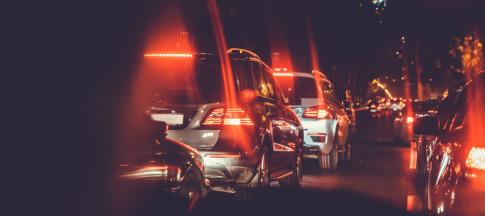
Drink driving is when someone drives a motor vehicle while their blood alcohol level is over the legal limit. It’s an illegal offence that puts lives in danger.
Can I get motor insurance with a drink-driving conviction?
Yes, you can still get motor insurance with a drink-driving conviction.
How much is car insurance after a drink-driving ban?
Your policy, provider and other factors will influence your price. But your insurance will always be more expensive after a drink-driving conviction.
Find out more about how penalty points – including drink driving – impacts your car insurance price.
Do I need to tell my motor insurance provider about my drink-driving conviction?
Most insurers, including us, ask you to tell us any driving conviction within the last five years when you’re getting a quote.
You must tell your insurer if you get a new drink-driving conviction while you have an active motor insurance policy.
Does driving over the limit invalidate my motor insurance?
A conviction may not always invalidate your policy but in most cases, it will.
The decision largely relies on context.
For example, if you injure someone in an accident while drink driving, then your insurer isn’t responsible.
However, insurers are legally responsible for third-party claims costs. But if the accident is your fault because of drink, then they’ll likely claim these costs back.
What are the penalties for drink driving in the UK?
Drink-driving penalties are serious.
The penalties for driving a vehicle while above the legal limit are:
- 3 months imprisonment
- up to £2500 fine
- a possible driving ban
Driving or attempting to drive above the legal limit:
- 6 months imprisonment
- an unlimited fine
- a driving ban for at least 12 months (3 years if convicted twice in 10 years)
Causing death through careless driving when under the influence of alcohol:
- 14 years imprisonment
- an unlimited fine
- a driving ban for at least two years
- a mandatory driving test before your licence is returned
Other penalties include difficulty travelling to certain countries and issues with your employment.
Drink-driving conviction codes
The drink-driving conviction codes are in two categories – Careless Driving (CD) and Drink (DR):
CD conviction codes
| Conviction | Meaning |
|---|---|
| CD40 | Causing death through careless driving when unfit through drink |
| CD50 | Causing death by careless driving when unfit through drugs |
| CD60 | Causing death by careless driving with alcohol level above the limit |
| CD70 | Causing death by careless driving then failing to supply a specimen for alcohol analysis |
DR conviction codes
| Conviction code | Meaning |
|---|---|
| DR10 | Driving or attempting to drive with alcohol level above limit |
| DR20 | Driving or attempting to drive while unfit through drink |
| DR30 | Driving or attempting to drive then failing to supply a specimen for analysis |
| DR31 | Driving or attempting to drive then refusing to give permission for analysis of a blood sample that was taken without consent due to incapacity |
| DR61 | Refusing to give permission for analysis of a blood sample that was taken without consent due to incapacity in circumstances other than driving or attempting to drive |
| DR40 | In charge of a vehicle while alcohol level above limit |
| DR50 | In charge of a vehicle while unfit through drink |
| DR60 | Failure to provide a specimen for analysis in circumstances other than driving or attempting to drive |
| DR70 | Failing to co-operate with a preliminary test |
Drink-driving convictions and insurance cost
Drivers with a drink-driving conviction are considered very high risk which increases the price of your car insurance.
If your price has recently gone up, then read how you can reduce your car insurance premium.
What are the drink drive alcohol limits in the UK?
It depends whereabouts in the UK you live.
England, Wales and Northern Ireland
The alcohol limit in England, Wales and Northern Ireland is:
- 35 micrograms per 100 millilitres of breath
- 80 milligrams per 100 millilitres of blood
- 107 milligrams per 100 millilitres of urine
Scotland
The alcohol limit in Scotland is:
- 22 micrograms per 100 millilitres of breath
- 50 milligrams per 100 millilitres of blood
- 67 milligrams per 100 millilitres of urine
So, after how many units can you drink and drive? It’s impossible to predict as the definition of drink-driving focuses on the volume in breath, blood and urine.
Alcohol effects people differently, and it’s better not to drive if you’ve drank anything.
Do drink driving limits differ for men and women?
The drink-driving limits for men and women are the same.
However, alcohol can affect people in different ways. This is because of physiology, genetics and environment.
So, while drink-driving limits are the same, the number of drinks to reach the limit is different from person to person.
How does drinking alcohol affect your driving behaviour?
Alcohol affects everyone slightly differently. But, anyone who has been drunk can agree that they’re in no shape to drive after too many.
Overall, alcohol causes:
- slower reaction times
- reduced ability to judge speed, distance and other driver behaviour
- impaired vision
- overconfidence, leading to speeding and risky driving
- lower concentration
Remember, these effects don’t go away the morning after. You can still have too much alcohol in your system the next day, leading to poorer driving and a possible conviction.
Driving under the influence of drugs has similar effects.


